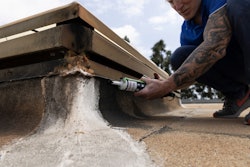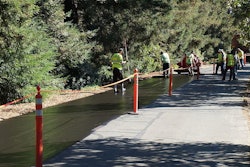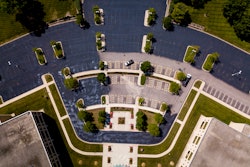Sealcoating works. Simple. As the article starting on page 16 points out, sealcoating can slow pavement deterioration, thereby extending pavement life and giving property owners and managers more bang for their pavement buck. Contractors who can do that are heroes to their customers. And as the article also points out, sealcoating makes a parking lot pavement – and the building and grounds around the pavement – look great. Perfect!
But like many processes and equipment and materials, sealcoating can be oversold. Don’t do it. It’s a perfectly fine maintenance and beautification process as it stands – it doesn’t need to be glorified to be something it’s not. And the main thing that it’s not is, it’s not a structural improvement to the pavement. If the paved is damaged – we’re talking cracks ¼-inch or wider, alligatored areas, potholes etc. – those areas must be repaired before sealcoating can be effective. Sealcoating damaged pavement only wastes customers’ money, increases their frustration, and gives sealcoating and the entire sealcoating industry a bad name.
So this is simple – as simple, in fact – as the fact that sealcoating works: Understand your material, learn about and use proper mix design, work with your sealer producer and follow recommended application procedures. Because when sealcoating is used as part of a pavement maintenance program that includes cracksealing and basic pavement repair, it not only makes pavement and properties look good it makes the entire industry look good.
How’s that for the value of sealcoating?




















